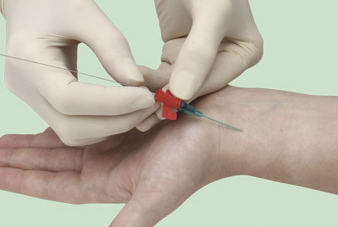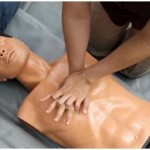Arterial line placement is the process where you insert a thin catheter into an artery. The intensive care medicine and anesthesia use the arterial line placement to monitor the blood pressure and to obtain samples for arterial blood gas measurements.
Knowing What Is Arterial line placement is important to understand as a common procedure to manage with the patients that are critically ill. This procedure is considered safe with a rate of major complications less than 1%. You can place arterial lines in multiple areas such as the radial, ulnar, brachial, axillary, dorsalis pedis, posterior tibial and femoral. The most suitable site and position of cannulation are the radial and the femoral artery.
<< Back to Medical Nursing Videos
What Is Arterial Line Placement? – The Video
Videos on
this site are for entertainment purposes only. Please
do not attempt any of the procedures seen in these videos
without formal medical education & licensing.
The radial artery is maybe the first choice because it’s easy of cannulation, consistent anatomy and has a low rate of complications. The femoral artery has a low risk of thrombosis but it also has a similar rate of complications. In choosing which of these arteries is better for arterial cannulation you can consider that both of them perform well for this function.
Indications
- Need for continuous blood pressure measurement ( sepsis, hemodynamic instability, CHF decomposition)
- Need for frequent blood gas measurements.
- Need for frequent blood sampling in patients without the central venous access.
Contraindications
- Infection at the patient’s site of insertion
- No access of the cannulation site (full-thickness burns, traumatic injury proximal)
- If the patient had history of surgery such as disrupting lymphatics of the upper extremity.
- Buerger disease
- Raynaud syndrome
Relative contraindications
- Anticoagulation
- Atherosclerosis
- Coagulopathy
- Previous surgery in that particular area
- Arterial insufficiency in the process of distribution of the artery to be cannulated
Needed material to perform this procedure:
- Sterile prep solution
- Arterial line insertion kit
- Positioning tape
- Sterile dressing
- Transduction system for monitoring
What Is The Arterial Line Placement Procedure?
Insertion is always painful but using an anesthetic such as lidocain can make the insertion more tolerable and can prevent the vasospasam by making cannulation of the artery easier.
- When you start with the insertion first you have to restrain the patient’s arm palm up with the wrist in position in dorsiflexion and put a rolled towel under the wrist.
- Make sure that the blood pressure cuff is placed right on the collateral arm, because of the blood flow while placing line.
- You have to make sure that the area is sterile and then anesthetize the puncture site.
- Take 18 or 20 gauge needle and hold it like a pencil, puncture the skin with the needle at a 30-degree angle.
- If you cannot find the radial artery you might try using ultrasound or Doppler for better visualization.
- Try to palpate the arterial pulse with the other hand and then put and hold the needle until a flash is obtained. After the flash is obtained you can remove the stylet and advance the soft catheter.
- After you place the arterial line, you can hook up the flushed arterial line transducer by tubing to the catheter tip. Make sure that you evaluate the waveform to ensure an accurate reading.
Complications
Every procedure has its own complications. Arterial line placement is safe procedure but in some cases can cause temporary arterial occlusion on the radial artery or hematoma bleeding. Here are some examples of rare complications:
- Sepsis
- Thrombosis
- Ischemia
- Nerve injury
- Air embolism
Difficulty with locating pulse and vasospasm
- This can happen if the patient is hypotensive or if the pressures are low enough to cause the vessels to constrict.
- If you already used the ultrasound for better visualization of the artery, you might consider also placing the line via guidewire.
- If the patient is hypotensive and you have difficulty doing the arterial line placement consider that you need to volume resuscitate the patient more before attempting again.























